Jump to:
If you’ve got scalp sores from tight braids, you’re probably wondering what to do about them. Keep reading to find out how to treat them—and stop them from coming back. It’s not quite as hard as you might think.
What Are Scalp Sores From Tight Braids?
People who regularly wear their hair in braids may experience flakes and scabbing, otherwise known as scalp sores. Scalp sores are usually accompanied by other signs, all of which are trying to tell you one thing: your braids are too tight.
It’s critical to take action and give your scalp some TLC if you notice them; otherwise, you might permanently damage your hair. What problems can scalp sores lead to, and how can you avoid them? We’re going to cover everything you need to know below.
Scalp Sores Explained
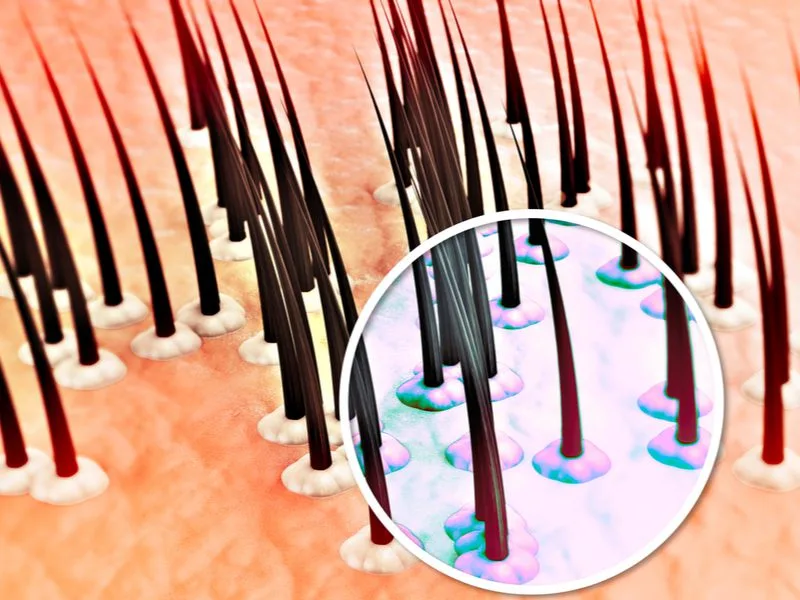
Naeblys/Shutterstock
Protective styles like braids are popular for many reasons. Lots of people choose them to give their locks a break from heat and chemicals, and they’re an excellent way to change up your look.
Plus, having braids cuts your styling time in half (and who doesn’t want that)? Although there are plenty of advantages, braids also have some drawbacks.
Plenty of stylists tug on the head to get the braids as tight as possible, which can lead to an itchy, painful scalp. Over time, the tightness may cause you to develop different kinds of sores. Some might have yellow or brown scabs, and others may even drain pus.
This problem is called folliculitis, an inflammatory skin condition affecting hair follicles—the tiny openings in your scalp that house the roots of your hair.
Folliculitis is a direct result of damaged hair follicles, as it leaves your hair more susceptible to the bacteria that cause the condition. You may notice other symptoms, like:
- A burning sensation
- Tension headaches
- Red, inflamed bumps
Can I Get Scalp Sores from Other Hairstyles?
Braids are just one of many hairstyles that can cause scalp sores. Some other common offenders include:
- Cornrows
- Extensions
- Tight ponytails
- Tight buns
What Are the Consequences of Tight Braids?
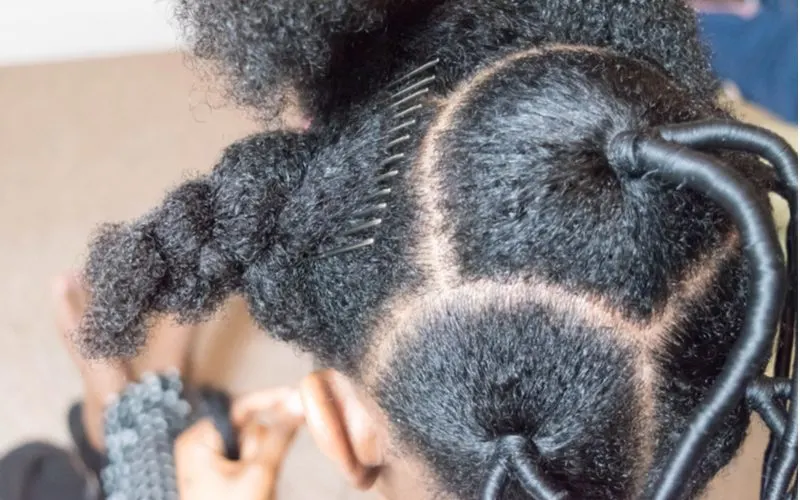
Red Confidential/Shutterstock
When it comes to braids, a typical school of thought is the tighter, the better. Tight braids are said to last longer, but are the negative consequences worth getting an extra week or two out of your hairstyle?
The scalp is a lot like the skin in that it can only stretch so far. So not only do tight braids hurt, but they can also cause some pretty serious consequences in the long term. The tension they put on the hair follicles can result in irreversible hair loss and thinning.
This condition is called traction alopecia. Traction alopecia is hair loss caused by pulling on your hair over and over. It can happen because of braiding, but some people also get it as a result of wearing their hair in tight ponytails.
Whatever the reason, repeatedly pulling hair loosens the hair shaft in the follicle. In time, the hair follicles get too damaged to produce new hair.
So the next time you’re getting your hair braided, you might want to keep this information in mind—and work with a stylist that won’t leave you in pain. Traction alopecia is not inevitable, but you have to catch it in time.
How to Treat Scalp Sores
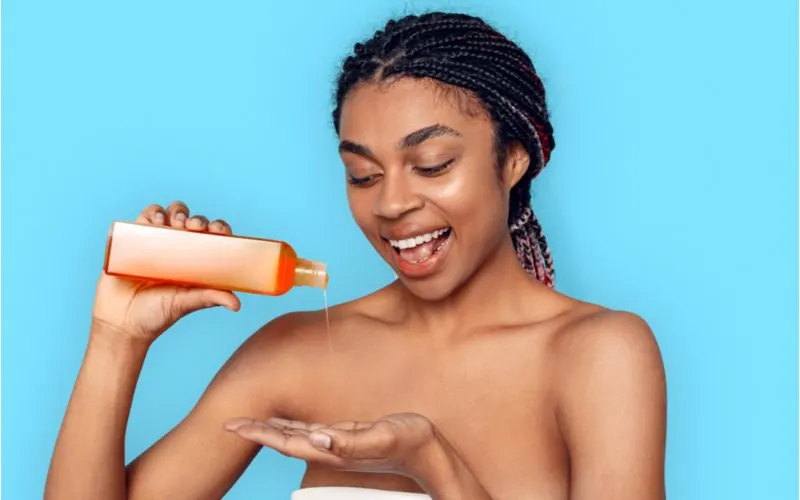
Viktoriia Hnatiuk/Shutterstock
Now it’s time to talk about how to treat scalp sores. It’s vital to know that they’re not a normal part of having braids, and there are several steps you can take to get your scalp healthy.
Step 1. Remove the Braids
The best thing you can do is remove the braids and allow your hair to breathe. If you decide to take them out, you should be very careful over the next few days as your hair recovers. Leave it alone as much as possible, and be gentle when you do have to handle your hair.
Step 2. Loosen the Braids
We understand that having your braids taken out may not be an option for everyone. If you prefer to leave yours in, the next thing to recommend would be loosening them. Not sure how to do this yourself? Go back to the place that did your braids and ask them to do it for you.
Have them focus on the front, as this area is where most of the tension comes from. Reputable salons will do this for free, especially if it’s only been a couple of days since you had them put in.
If going back to the salon or stylist is not an option, don’t attempt to loosen the braids yourself. You might end up causing breakage, which no one wants.
Step 3. Nourish Your Scalp
Tight braids put a lot of pressure on the scalp, leading to dryness. Nourish it with a good leave-in conditioner to help relieve some of the tension. Just remember that too much can lead to unpleasant build-up, so you may want to try a spray version for even coverage.
How to Prevent Scalp Sores
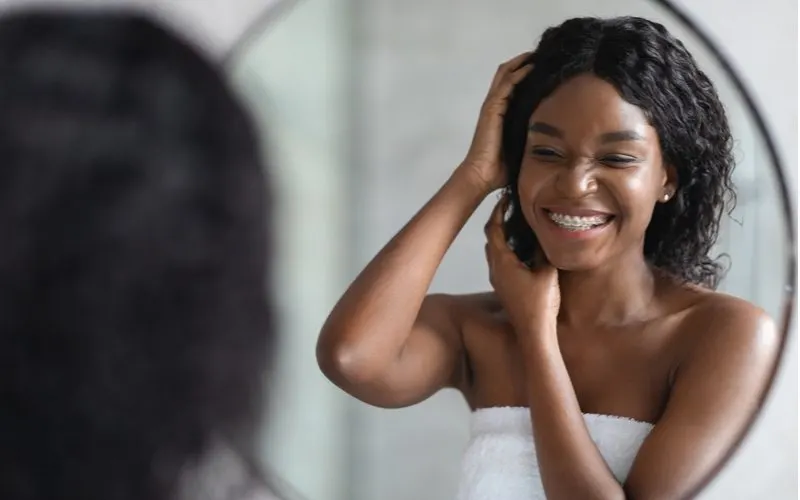
Prostock-Studio/Shutterstock
No one wants to deal with scalp sores, and thankfully, there are steps you can take to keep your scalp healthy. Here are some ways to prevent scalp sores for a happy scalp.
Wear Your Hair Down
Are you constantly styling your braids? Try giving them a break and wearing them down. Gravity and tension are already at work, and tugging on your braids to put them up—or worse, tightening them—can damage your scalp.
And if you’re already noticing soreness and flakiness, try abandoning your styling altogether for a few days. It’ll give your scalp time to recover, and that’ll be well worth the reset.
Prepare Hair Extensions
Before heading to the stylist, it’s vital to prepare your extensions. Make sure to soak synthetic hair in an apple cider vinegar bath, neutralizing alkalinity. Mix one part vinegar and three parts hot water, and let your extensions soak for twenty minutes. Shampoo well afterward.
This tip may also help you if you are wearing untreated synthetic hair and dealing with itchiness. It’s not too late to prepare the extensions. Just make the same vinegar solution and pour it over your braids—shampoo when you’re done.
Change It Up
The best practice for a healthy scalp is to give your braids a rest. Alternate between your protective style and a natural hairstyle if you can, which gives your scalp a chance to rest.
Avoid Chemically Processing Your Hair
People who braid their hair or use weaves should avoid chemically processing their locks as much as possible. The reason? These harsh chemicals can damage your hair, making breakage and scalp irritation more likely.
Jump in the Sauna
Seriously—if you have access to a sauna (like at your gym), a quick session helps nourish the scalp by opening up its surface. Getting the pores open makes it easier for braids to loosen up on their own. No sauna? No worries. A hair steamer can help you achieve the same effect.
Take Your Braids Out
If all else fails, it’s probably time to remove your braids. We get it—it probably feels like a waste of money to take your braids out before you need to. But the hard truth is that if you’re noticing sores, bumps, or other discomforts, it’s not worth persevering through the pain. Trust us… your scalp will thank you for it in the long run.
Things to Consider
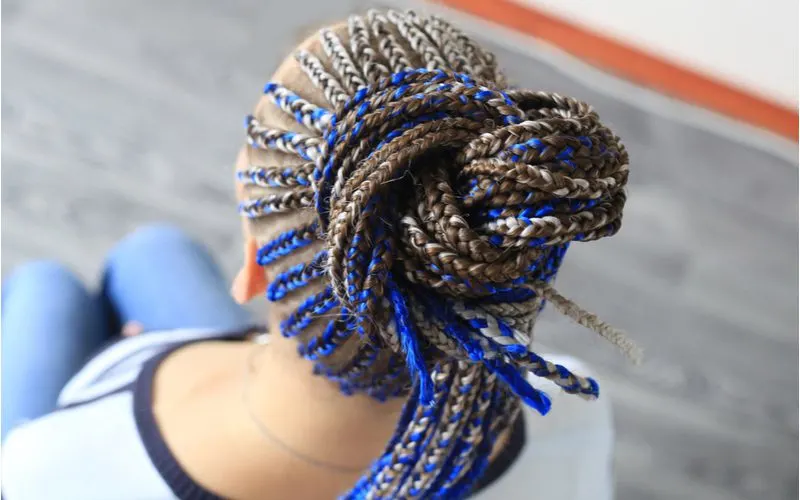
Gorgeoussab/Shutterstock
Here and some do’s and don’ts for bread wearers:
- Do: Wash your braids. Some people avoid washing them because they take a while to dry. But if you skip washing for too long, sebum and dead skin cells get trapped, leading to that itchy scalp we want to avoid. Try to wash your hair every three or four days.
- Do: Massage your scalp with essential oils. Grab your favorite scent (try coconut or sweet almond oil) and rub it into your scalp. An occasional massage not only feels great but also encourages blood flow, which stimulates hair growth.
- Don’t: Wear your braids too long. Eight weeks should be your max. After two months, you’ll have new hair growth, which can tangle and twist, and—you guessed it—irritate the scalp.
- Don’t: Be afraid to consult your dermatologist. If you feel like something’s not right, a dermatologist can help you figure out the root cause of the problem (no pun intended).
Frequently Asked Questions
Is pain normal with braids?
If your head hurts, your braids are too tight—period. Some people will tell you that it’s normal or that you should just take an aspirin, but any pain at all is a reliable indication that something’s wrong.
Can I soothe scalp sores with over-the-counter medications?
Yes, you can. Try using cortisone cream to reduce inflammation and itchiness and an antibiotic cream (Neosporin) for the bacteria.
So, What Are Scalp Sores?
So there you have it– how to get rid of scalp sores from tight braids. The discomfort is the flaky and scabby result of protective hairstyles, but it’s not inevitable. Since tight braids cause them, communicate openly with your stylist about how tight is too tight.
And remember, any stylist worth their salt will work with you to deliver a look that’s beautiful and stylish—and that won’t put you at risk for conditions like folliculitis and traction alopecia.
